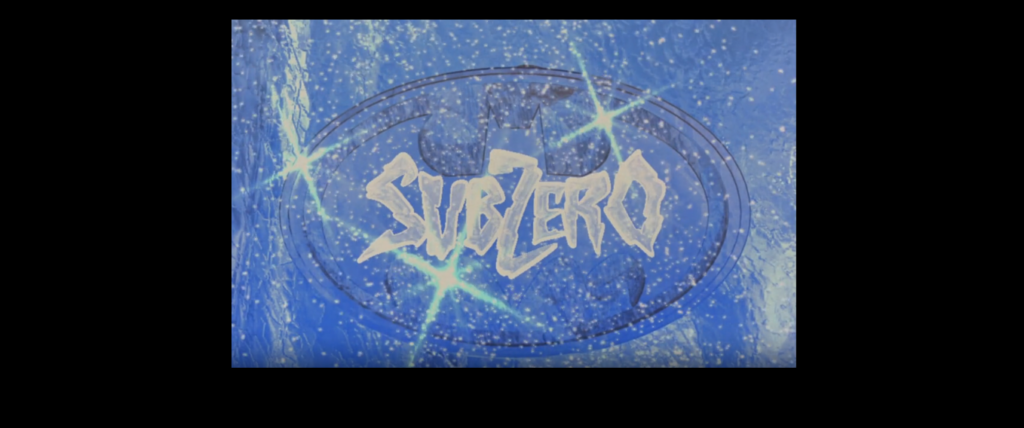Last Updated on June 22, 2025
For a limited time watch the movies “Subzero with Batman and Mr Freeze” and “Superman: Brainiac Attacks” Animated Action Videos for Free

Animated adaptations of comics often feel closer to the source material. Why? They let creators bring the vibrant art, wild powers, and larger-than-life stories to life without limits. While live-action struggles with budgets or realism, animation thrives on its ability to capture the most surreal moments effortlessly. If you’ve ever wondered why your favorite comic feels more alive in animated form, you’re not alone. Stick around to see why this format continues to win fans over.
Freedom of Creativity in Animation
Animation is where anything imaginable can come to life without the limits of gravity, budget, or practical effects. Comic book adaptations thrive in this medium, where creative expression flourishes in ways live-action simply can’t replicate. Here’s why animation excels.
Visual Effects Without Limits
Superheroes defy the rules of reality, and their powers often border on the impossible. Animation can effortlessly bring these fantastical elements to life without worrying about budgets or physical constraints. Want a fight among floating cities? Easy. Need a portal that shatters reality into kaleidoscopic shapes? No problem.
Animated films and series can depict superhuman speed, otherworldly settings, and villainous powers in ways that feel natural instead of forced. Live-action, despite advances in CGI, often struggles to make these effects look realistic or fluid. Think about Spider-Man’s gravity-defying flips or Doctor Strange’s surreal multiverse trips – they just look smoother and more vivid in animation.
Animation makes the impossible feel possible. This freedom empowers creators to go wild with visuals while ensuring the story stays true to its imaginative roots. This article explains how freedom in animation allows creators to avoid creative bottlenecks.
Instructions to watch the Animated movie “Subzero with Batman and Mr Freeze“, click on the screen or the play button. It might take 15 or 20 seconds and the movie should start to play. Note: 12-06-24 Audio would not work with Google Chrome or Firefox. Opera and Edge worked fine.
Please note: we do not host these videos we found them on Archive.org
This limitless nature of animation makes it tailor-made to capture the intricate details and larger-than-life moments comics are famous for. There’s no second-guessing whether something is “too much” – if the panels can depict it, the animation can too.
Artistic Style and Aesthetic
Comic books have a distinct visual appeal – exaggerated features, bold colors, and dramatic lines. Live-action generally tones this down for realism, but animation? It leans all the way in.
Animation mimics and enhances comic book art styles. It preserves the hand-drawn textures, dynamic angles, and splashy color palettes of the comics. For example, the groundbreaking “Spider-Man: Into the Spider-Verse” showcased different animation techniques to represent each character’s unique comic origins. This wouldn’t have been possible in live-action without diluting the visual integrity.
Animation also allows studios to experiment. They can match the visual style of a comic or create something entirely new that still feels connected. The result? A faithful yet innovative adaptation that honors the artist’s original vision. Here’s a deeper dive into how animation’s creative edge transforms storytelling.
In short, animation blends the vibrancy of the comic page with the lifelike motion of film, creating something entirely unique. It’s like seeing your favorite panels come alive right before your eyes.
Character Authenticity and Voice Acting
One of the most captivating advantages of animated adaptations is their ability to stay true to the source material, both in how characters look and how they sound. These elements work together like a perfect duet, giving fans a closer connection to the characters they already love.
True-to-Source Character Designs
Animation has the unique freedom to preserve the exact look of comic book characters. Whether it’s the swoosh of a cape or the glint in a villain’s eye, animated adaptations bring every detail to life. Unlike live-action, which often has to tweak costumes or designs for practical reasons, animation can go all-in on accuracy. Think of Batman’s iconic cowl or Wolverine’s over-the-top hairstyle—animated versions nail it perfectly without compromise.
- Fidelity to Original Art: Animators can replicate the texture, line work, and color that defines a comic’s style.
- Consistency Across Universes: Characters can look identical to their comic iterations instead of bending to the actor’s likeness.
- Freedom from Real-World Constraints: No fabric malfunctions or awkward physics to ruin iconic costumes.
A great example of this is the animated series “Justice League Unlimited,” which captures the characters’ classic comic book designs nearly flawlessly. This piece explores how authentic design choices elevate character storytelling across mediums.
Voice Acting Brings Characters to Life
What makes an animated hero or villain more relatable? Their voice. Talented voice actors can transform two-dimensional drawings into characters bursting with depth and emotion. Imagine Harley Quinn without the playful chaos in her voice or Darth Vader without James Earl Jones’ legendary gravitas—it doesn’t work, right?
Voice actors take on the personalities of those they play, giving life to heroes and villains alike. Their vocal artistry can transform an ordinary scene into something unforgettable. Here’s why it works so well:
- Emotionally Charged Performances: A skilled actor can express grief, joy, or anger just by altering their tone.
- Unique Voices for Unique Characters: From raspy anti-heroes to chipper sidekicks, each character is given a distinct identity.
- Authenticity Matters: When casting matches the character’s traits, it feels seamless. Voice, delivery, and phrasing all contribute to believability. Check out this article on how this shaped the animated adaptation of Invincible.
Instructions to watch the Animated movie “Superman Brianiac Attacks” click on the screen or the play button. It might take 15 or 20 seconds and the movie should start to play. Note: 12-06-24 Audio would not work with Google Chrome or Firefox. Opera and Edge worked fine.
Please note: We do not host these videos, we found them on Archive.org
The importance of casting the right voice actor can’t be overstated. In animations like Avatar: The Last Airbender, the blending of voice, personality, and dialogue enhances emotional moments and character development. Voice acting isn’t just about reading lines—it’s about inhabiting the role completely. And when it’s done right, we don’t just watch—we feel.
Cost-Effectiveness of Animation
Animated adaptations of comics don’t just succeed creatively—they’re also a smart financial decision. When compared to live-action, animation can stretch a dollar while maintaining the spectacle fans love. Below we’ll break down how animation keeps costs low and delivers where live-action often falters.
Budget-Friendly Visuals
In live-action, recreating the vibrant worlds and powers drawn in comic panels is expensive. Cities must be built (virtually or physically), actors fly on wires, and CGI animates superpowers. Each of these costs can pile up quickly. Animation, in contrast, doesn’t rely on the real world to deliver the fantastic.
Consider this: instead of spending millions on a single elaborate set or green screen setup, animators can craft entire galaxies or supervillain lairs with digital tools. Once the world is illustrated, building on it is significantly easier.
A few reasons why animation is budget-friendly:
- No Physical Locations Needed: Forget location scouts and on-site shoots. All settings are created digitally in-house.
- Efficient Reuse of Assets: Animated productions can recycle elements like character templates, reducing labor and cost.
- Lower Production Risks: No bad weather, lighting issues, or actor injuries to derail a project.
According to this breakdown, animation can often cut costs by bypassing the expensive logistics tied to live-action filming. While high-quality animation still requires a budget, it brings more value for money when capturing grand, comic-inspired visuals.
By minimizing these costly barriers, animation offers financial simplicity while still delivering top-tier visual appeal.
Less Risk of Poor Adaptation
Live-action adaptations often struggle to meet fan expectations. From awkward casting choices to bizarre costume redesigns, reality doesn’t always translate comic magic effectively. Animation, however, preserves what fans love—and critics notice.
Why is animation less risky? It allows creators to stay as close to the source material as possible. Characters can have their iconic looks, powers can behave as they do in the panels, and artists can replicate the bold aesthetics of the original comics. No compromises needed.
In contrast, live-action versions often face:
- Negative Fan Reactions: A costume that looks fine in 2D art might appear silly on a real actor.
- Unavoidable Human Limits: Actors can’t always replicate the movements or expressions comics demand.
- Stakeholder Influence: Studio decisions often dilute the creative vision, leading to adaptations that feel disjointed.
Animated adaptations, like Spider-Man: Into the Spider-Verse, bypass these pitfalls by working creatively within the medium’s strengths. The result? Stories that look and feel just like the comics. This blog explores why sticking true to animation keeps fans happier compared to many live-action remakes.
By leaning into the strengths of the animated medium, studios can avoid creative missteps that could alienate their core audience. So, instead of asking, “How can we make this live-action?”, they should be asking, “Why bother when animation nails it?”
Engagement and Audience Connection
Animated adaptations of comics don’t just attract viewers; they forge a deeper connection. These stories go beyond visuals and into the hearts of fans by creating an emotional pull audiences can’t resist. From childhood nostalgia to cross-generational appeal, animation has a unique way of making viewers feel part of the narrative.
Nostalgia Factor: How Animated Series Tap Into Childhood Memories
There’s something magical about revisiting the stories of your youth. Animated comic adaptations often echo the same feeling as curling up with your favorite cartoon after school. They reconnect us to simpler times, blending familiarity with the rush of reliving those moments.
Many animated adaptations are designed to remind us of the shows or comics we grew up with. The colors, voice acting, and subtle nods to vintage styles bring back a flood of emotions. Think of The Batman Animated Series or Teenage Mutant Ninja Turtles. These adaptations are more than just shows—they’re time machines to our childhoods.
Nostalgia isn’t just a bonus—it’s a powerful motivator. When audiences feel that connection, they invest emotionally. Animated adaptations intentionally pull heartstrings, triggering memories that deepen the experience. Dive deeper into how nostalgia shapes audience loyalty in this piece.
Appeal to All Ages: How Animation Reaches Diverse Audience Demographics
Animation is a rare gem that connects with every age group. Whether you’re six or sixty, there’s something universally appealing about the art form. Why? It’s because animation thrives on storytelling that transcends age.
Animated comic adaptations often strike a balance between humor for kids and subtle themes for adults. For example, Spider-Man: Into the Spider-Verse feels playful but also handles mature ideas, like self-doubt and responsibility, in ways that resonate with older viewers. This layered storytelling ensures no one feels left out.
Here’s why animation works for all demographics:
- Flexible Tone: Animation can shift between lighthearted and intense without alienating viewers.
- Relatable Themes: Stories cover human emotions and values that everyone understands.
- Visually Inclusive: The stylized look of animation appeals whether you’re young or simply young at heart.
The best part? You can watch with your kids, your parents, or on your own, and it still works. Shows like Justice League Unlimited or Teen Titans are proof that animated adaptations can connect with fans across generations. You can learn more about how animation adapts to its audience here.
Animated adaptations build bridges between different age groups, ensuring no one feels excluded. It’s like hosting a party and realizing everyone is having fun.
Success Stories in Animation vs. Live-Action
Animated adaptations and live-action adaptations often feel like two sides of the same coin, but their results? Night and day. Some animated stories capture the spirit of comics like lightning in a bottle, while their live-action counterparts occasionally fumble, leaving fans scratching their heads. Let’s explore why animation wins here.
DC and Marvel Animated Features
DC and Marvel have a treasure trove of animated gems. These features aren’t just adaptations; they’re love letters to the fans who grew up with these characters. DC, in particular, has consistently released animated hits that honor the original comics while creating fresh experiences.
Some standout DC animated successes include:
- “Batman: Mask of the Phantasm”: A fan-favorite that dives into Batman’s psyche while delivering an emotional punch.
- “Justice League: The Flashpoint Paradox”: A thrilling, time-altering storyline that kept its comic roots intact.
- “Superman: Red Son”: A fascinating “what-if” story imagining Superman growing up in Soviet Russia.
Marvel has had successes too, albeit fewer in number. Highlights include:
- “Hulk Vs.”: An action-packed double feature showcasing Thor and Wolverine going toe-to-toe with the green giant.
- “Doctor Strange: The Sorcerer Supreme”: Perfectly capturing the mysticism of the character’s origins.
While DC’s animated universe shines with consistent hits, Marvel excels with its cinematic universe. Curious about DC’s animated success compared to Marvel’s? This guide offers insight into why DC leads the charge in animated storytelling.
Failed Live-Action Attempts
For every animated triumph, there’s often a live-action stumble. Translating comic magic to live-action means grappling with production limits, casting, and occasionally bizarre creative choices.
Here are some live-action adaptations that left fans disappointed:
- “The League of Extraordinary Gentlemen”: Despite its stellar comic source, this adaptation fell flat with altered plots and lackluster visuals.
- “Jonah Hex”: A Western anti-hero story turned into a forgettable action movie. Fans deserved better.
- “Fantastic Four” (2015): Ambitious but riddled with production issues that left it as one of the most panned films in comic history.
Even Marvel, who dominates the box office, has had misfires. Remember the original “Daredevil” (2003) or “Elektra” (2005)? These films felt soulless compared to their animated counterparts, which better captured the essence of the heroes.
Adaptation fails aren’t just painful for audiences—they’re missed opportunities for studios. Deep dive into the worst live-action missteps in this list.
By comparing animated successes with live-action mishaps, it becomes clear: staying faithful to the medium without overcomplicating the vision often leads to better storytelling. Animation embraces the essence of comics, while live-action sometimes struggles under its own ambition.
Conclusion
Animated comic adaptations shine because they bring stories to life in ways live-action often can’t. From capturing visual details to delivering boundless creativity, animation feels like comics leaping off the page. It’s faithful, vibrant, and full of the magic fans crave.
Ready to explore some of your favorite animated adaptations? Share your top picks—and let others fall in love with the format too!







